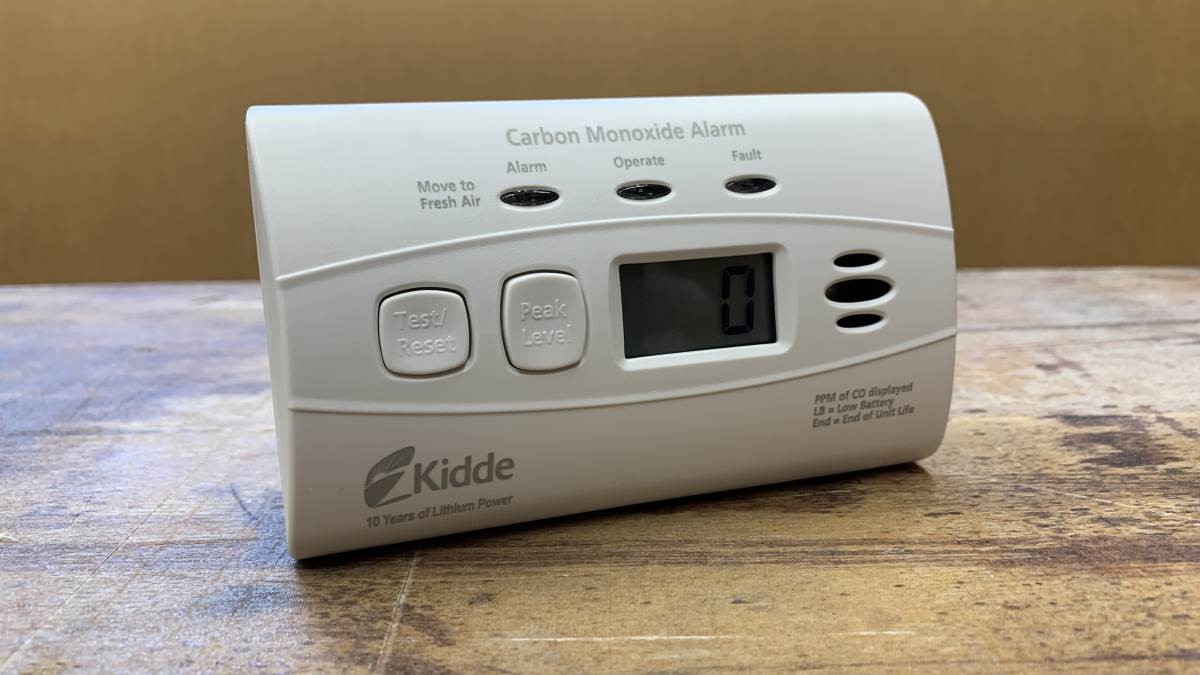

Best Places For Carbon Monoxide Detectors: Ensuring Your Safety At Home
When it comes to home safety, having a reliable carbon monoxide detector is essential. Carbon monoxide (CO) is a silent killer, and its presence in your home can be life-threatening. Choosing the best place for a carbon monoxide detector can significantly enhance your safety and the safety of your loved ones. In this article, we will explore the best locations for placing carbon monoxide detectors, how they work, and what to consider when purchasing one.
Carbon monoxide is an odorless, colorless gas produced by burning fossil fuels. It can accumulate in enclosed spaces, leading to symptoms like headaches, dizziness, and even death. Therefore, understanding where to place your carbon monoxide detectors is crucial in preventing CO poisoning. This article aims to provide comprehensive insights into the best practices for installing carbon monoxide detectors in your home.
This guide will cover various aspects, including the functions of carbon monoxide detectors, specific locations for installation, recommended brands, and maintenance tips. By the end of this article, you will be well-informed about how to keep your home safe from this invisible threat.
Table of Contents
- What is Carbon Monoxide?
- Importance of Carbon Monoxide Detectors
- Best Places for Installation
- Recommended Product Brands
- Maintenance Tips for Carbon Monoxide Detectors
- Frequently Asked Questions
- Conclusion
What is Carbon Monoxide?
Carbon monoxide (CO) is a toxic gas produced during the incomplete combustion of fuels such as natural gas, gasoline, wood, and coal. It is often referred to as the "silent killer" because it is colorless, odorless, and tasteless. In homes, CO can be generated by various appliances:
- Gas furnaces
- Water heaters
- Gas stoves
- Fireplaces
- Generators
Understanding the sources of carbon monoxide is essential in preventing its accumulation in your home. The risk of CO poisoning increases during winter months when heating systems are used more frequently.
Importance of Carbon Monoxide Detectors
Carbon monoxide detectors are life-saving devices that alert residents to the presence of CO in their homes. Here are some reasons why they are so important:
- **Early Warning:** CO detectors provide timely alerts, allowing occupants to evacuate before exposure becomes dangerous.
- **Peace of Mind:** Knowing that you have a reliable detector in place can significantly reduce anxiety about CO exposure.
- **Compliance with Regulations:** Many jurisdictions require the installation of CO detectors in residential properties.
Best Places for Installation
Choosing the right location to install your carbon monoxide detectors is crucial for their effectiveness. Here are the best places to consider:
1. Near Sleeping Areas
Install carbon monoxide detectors in or near each sleeping area. If the alarm goes off while you are asleep, you need to be alerted immediately.
2. On Every Level of Your Home
Ensure that there is a detector on every floor, including the basement and attic. This provides comprehensive coverage throughout your entire living space.
3. Away from Fuel-Burning Appliances
While it’s essential to have detectors near sleeping areas, avoid placing them directly next to fuel-burning appliances. This minimizes the chance of false alarms.
4. In Hallways and Common Areas
Install detectors in hallways and common areas where they can easily be heard throughout the home. This ensures that everyone is alerted in case of an emergency.
Remember to follow the manufacturer's instructions for installation height and placement. Most detectors work best when mounted on a wall or ceiling.
Recommended Product Brands
When it comes to choosing a carbon monoxide detector, several brands are known for their reliability and performance. Here are some recommended options:
- **Nest Protect:** Known for its smart features and integration with home automation systems.
- **Kidde:** Offers a wide range of reliable and affordable CO detectors.
- **First Alert:** Known for its user-friendly designs and effective detection capabilities.
- **Honeywell:** Provides high-quality detectors with advanced features.
When selecting a detector, consider factors such as battery life, ease of installation, and any additional features that may enhance safety.
Maintenance Tips for Carbon Monoxide Detectors
To ensure your carbon monoxide detectors function effectively, regular maintenance is necessary. Here are some essential tips:
- **Test Monthly:** Press the test button on your detector monthly to ensure it is working correctly.
- **Replace Batteries:** Change the batteries at least once a year or when the low-battery alert sounds.
- **Replace Detectors:** Carbon monoxide detectors typically have a lifespan of 5-7 years. Replace them when they reach the end of their life.
Frequently Asked Questions
Here are some common questions about carbon monoxide detectors:
1. How do I know if my CO detector is working?
Press the test button to check if it beeps. If it doesn’t respond, replace the batteries or the unit itself.
2. Can I install a CO detector myself?
Yes, most carbon monoxide detectors are easy to install. Follow the manufacturer's instructions for best results.
Conclusion
In conclusion, knowing the best places for carbon monoxide detectors is essential for protecting your home and loved ones from the dangers of CO poisoning. By installing these detectors in appropriate locations, maintaining them regularly, and choosing reliable products, you can ensure a safer living environment. Don't wait until it’s too late—take action today to secure your home against carbon monoxide risks. If you found this article helpful, please leave a comment, share it with others, or explore more articles on our site for additional safety tips.
Last Thoughts
Thank you for reading! We hope this article has provided you with valuable insights into carbon monoxide safety. Be sure to return for more informative content on home safety and other relevant topics.
You Also Like
Discovering Lean Cuisine Meals: A Comprehensive Guide To Healthy EatingUnderstanding The Meaning Behind Foo Fighters' "The Pretender"
Understanding Commenters: The Unsung Heroes Of Online Engagement
Check On Someone Meaning: Understanding The Significance And Usage
Exploring The World Of Avatar: The Team Avatar




